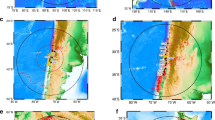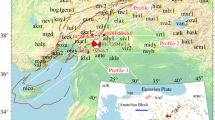Abstract
The newly developed techniques of space geodesy, especially the Global Positioning System (GPS), allow the monitoring of ongoing crustal deformation and provide a powerful tool for analysis of the regional seismotectonic regime and characterization of current strain accumulation and release.
Recently, the northern region of the Ref Sea, the southern part of the Gulf of Suez and the Gufl of Aqaba-Dead Sea Fault are a tectonically seismoactive zone. Mainshocks, aftershock sequences as well as earthquake swarms are associated. Moreover, this tectonic zone is capable of producing large earthquakes that could cause extensive damage in the region. Large earthquake was occurred in March 31, 1969 at Shedwan island, to the south of the Gulf of Suez of Suez and north Red Sea, with a magnitude 6.9 and the last large earthquake was occurred in November 22, 1995 in the Gulf of Aqaba with a magnitude 7.0.
In order to monitor the crustal deformation in Sinai Peninsula and around the regions of the northern Red Sea-Gulf of Suez and Gulf of Aqaba a GPS geodetic network consisting of 12 geodetic points was established in 1994. The initial geodetic measurements were performed in April 1994 GPS receivers type Trimble 4000 SSEs. The geodetic measurements were repeated in April 1995 and April 1996 using the same type of GPS receivers. Twenty-eight baselines ranging from 46 to 166 km were determined from the six-to-eight-hours observation using precise ephemerides.
A southwest displacement of 166 mm was recorded at Dahab geodetic point, 26 km southwest of the epicenter of the November earthquake, in the period April 1995-April 1996, and a northeast displacement of 32 mm was observed at Ras-Mohamed, 50 km southwest of the epicenter. These displacements show a left lateral fault and it agree well with the focal mechanism of the November earthquake (strike-slip mode with the tension axis of 65 degree from north), and aftershocks distribution.
Access this chapter
Tax calculation will be finalised at checkout
Purchases are for personal use only
Similar content being viewed by others
Editor information
Editors and Affiliations
Rights and permissions
Copyright information
© 1998 Springer-Verlag Berlin Heidelberg
About this paper
Cite this paper
Kimata, F. et al. (1998). The Aqaba Earthquake of November 22, 1995 and Co-Seismic Deformation in Sinai Peninsula, Deduced from Repeated GPS Measurements. In: Forsberg, R., Feissel, M., Dietrich, R. (eds) Geodesy on the Move. International Association of Geodesy Symposia, vol 119. Springer, Berlin, Heidelberg. https://doi.org/10.1007/978-3-642-72245-5_67
Download citation
DOI: https://doi.org/10.1007/978-3-642-72245-5_67
Publisher Name: Springer, Berlin, Heidelberg
Print ISBN: 978-3-642-72247-9
Online ISBN: 978-3-642-72245-5
eBook Packages: Springer Book Archive




